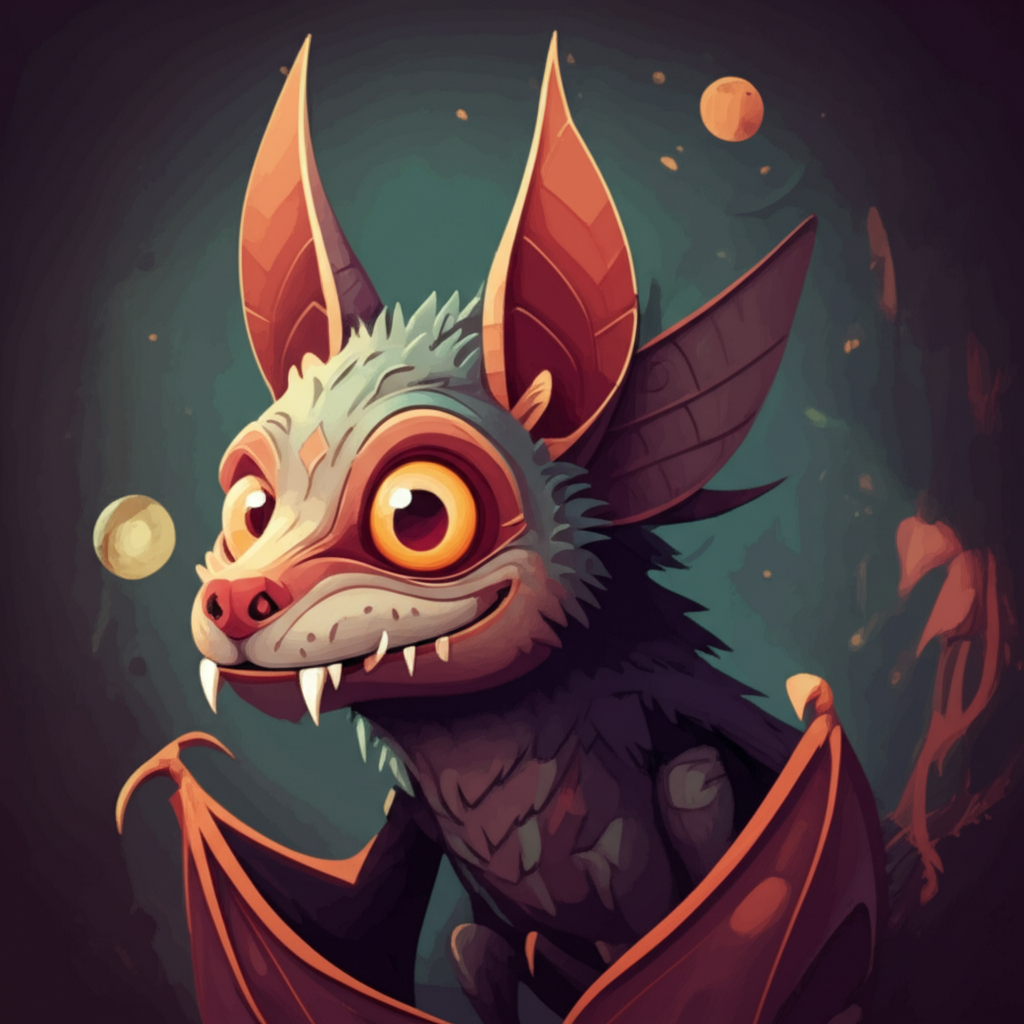
The ancient Maya civilization, a tapestry woven with intricate calendars, monumental architecture, and profound cosmological beliefs, once flourished across the Yucatán Peninsula. Within their vibrant worldview, teeming with deities and mythical creatures, the story of Camazotz, the "Death Bat," emerges from the shadows of their rich folklore. This is not a tale of historical fact, but a testament to the imaginative power of ancient peoples, a narrative passed down through generations, offering a glimpse into their understanding of the world and its unseen forces.
The Maya people, particularly during the Classic Period (c. 250-900 CE) when Chichen Itza reached its zenith, lived in a world deeply interconnected with the cycles of nature. Their cosmos was not a static entity but a dynamic, pulsating universe governed by celestial movements, agricultural rhythms, and the constant interplay between life and death. They perceived the world as layered, with the heavens above, the earthly realm, and the underworld, Xibalba, a formidable and mysterious domain. It was within this intricate cosmology that beings like Camazotz found their place, embodying aspects of the natural world that inspired both awe and trepidation. Their understanding of these forces was often expressed through myth and legend, shaping their rituals, art, and societal structures.
Camazotz, as envisioned by the ancient Maya, was a formidable entity, a creature born from the deepest recesses of the underworld. Often depicted as a monstrous bat, its form transcended mere zoological description. Its eyes were said to glow with an otherworldly luminescence, piercing the perpetual darkness of Xibalba. Its talons were described as razor-sharp, capable of inflicting mortal wounds, and its wings were vast, capable of casting an impenetrable shadow. This was no ordinary nocturnal hunter; Camazotz was a harbinger of doom, a guardian of the underworld’s terrifying secrets. Its symbolic attributes were potent: the bat, a creature of the night, represented the unknown, the unseen, and the transition between realms. Its association with death was not necessarily malicious but spoke to the Maya’s understanding of the cyclical nature of existence, where death was an integral part of the continuum of life.
The most prominent narrative featuring Camazotz emerges from the Popol Vuh, the sacred book of the K’iche’ Maya, though its influence is felt across various Maya traditions. The story recounts the perilous journey of the Hero Twins, Hunahpu and Xbalanque, into the underworld, Xibalba, to confront the lords of death. They descended into a realm of perpetual twilight, navigating treacherous trials and facing fearsome guardians. Among these challenges, they encountered the dreaded Camazotz, a creature of immense power that dwelled within a cave known as the "House of Bats."
As Hunahpu and Xbalanque cautiously entered this cavern, the air grew heavy, and a chilling screech echoed through the darkness. Suddenly, Camazotz descended, a terrifying spectacle of leathery wings and sharp fangs. The Hero Twins, though brave, were forced to take refuge in their blowguns, seeking to ward off the relentless onslaught of the bat-god. The narrative describes a desperate struggle, a dance of shadows and courage within the suffocating confines of the cave. While the Hero Twins ultimately triumphed over Camazotz and the other lords of Xibalba, their encounter with the Death Bat served as a stark reminder of the perils that lurked in the depths of the unknown. This tale, presented as an imaginative account of a mythical encounter, underscores the perilous nature of the underworld and the formidable beings that supposedly inhabited it.
The symbolism embedded within the myth of Camazotz is multifaceted. For the ancient Maya, the bat’s nocturnal habits and its association with caves, often seen as entrances to the underworld, made it a natural embodiment of death, darkness, and the mysteries of the afterlife. Camazotz could represent the primal fears of the unknown that lie beyond life’s cessation. Its role as a guardian of Xibalba also suggests a sense of order within chaos, even in the most terrifying realms. It might have served as a cautionary figure, reminding people of the respect due to the forces of nature and the spiritual world, and the consequences of challenging these powers. The Hero Twins’ victory, conversely, could symbolize the triumph of human ingenuity, courage, and perhaps even the cyclical renewal that follows death, allowing for the eventual return of light and life.
In contemporary times, Camazotz continues to capture the imagination, transcending its ancient origins to find new life in modern storytelling. The creature has been featured in literature, from fantasy novels that draw inspiration from Mesoamerican mythology to comic books where it may be reimagined as a formidable antagonist. Its presence is also felt in video games, where it often appears as a challenging boss character, its dark powers and terrifying appearance a testament to its enduring mythological resonance. In cultural studies, Camazotz serves as a fascinating subject for understanding ancient Maya beliefs, their artistic expressions, and their enduring legacy. It allows us to explore how ancient cultures grappled with universal themes of life, death, and the unknown through the powerful medium of storytelling.
It is important to reiterate that the story of Camazotz is a traditional narrative, a product of the rich cultural heritage and imaginative spirit of the ancient Maya people. These tales, while compelling and informative about their worldview, are not to be taken as literal truths or divine pronouncements. As Muslims, we recognize that the sole Creator and Sustainer of all existence is Allah (God), and all power and dominion belong to Him alone. The study of such myths offers us a window into the diverse tapestry of human culture, allowing us to appreciate the creativity and storytelling traditions that have shaped our understanding of the world and the narratives that have been passed down through the ages. The whispers of Camazotz from the underworld of ancient Chichen Itza continue to resonate, not as a call to worship, but as a reminder of the enduring power of myth and the boundless capacity of the human imagination.



